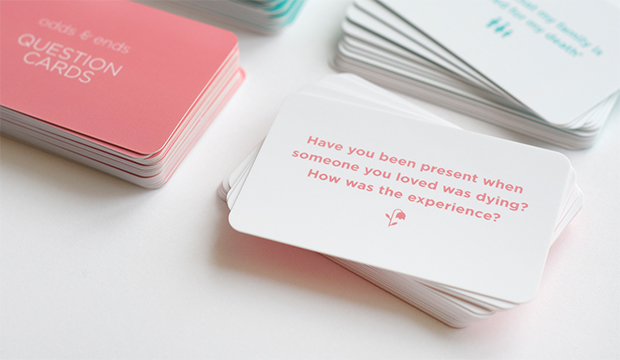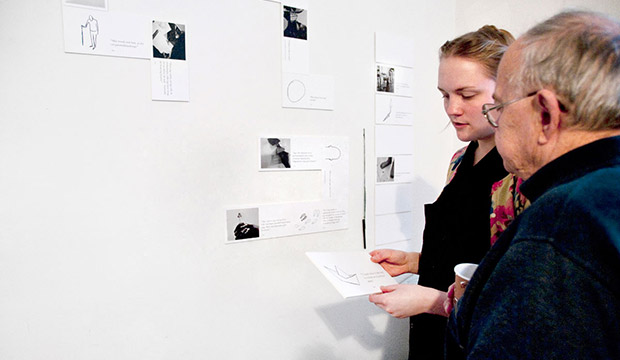The life of a design researcher
Coloplast’s business encompasses stoma care, continence care, wound care, and urology care. I work as part of a User Research (or User Insight if you prefer the correct legacy term) team, and we are the user advocates within innovation projects. We bring different backgrounds to this work, but have all started out in design in some way, e.g. industrial design, design research, or design engineering. For now, though, I’m the only service designer in the team. I'm also the only one from our team who work within our intermittent self-catheterisation business — and that's about as much as I can say about the actual work.
One of the stories I love to give, which I think summarises some aspects of our day-to-day work very well, is the one about airport security. It's the story of me flying home from Chicago after a long research trip. I'm exhausted and keen to get on that plane and fall asleep. But, as it so often goes, I get pulled aside at the airport security by a stern-looking, buff guy. He asks if he can go through my luggage, to which I of course reply: 'Sure! But... Just to warn you in advance; I work for a company developing urinary catheters and you will find some models of the lower body parts in there' (and to make sure he got it, I also provided him with a visual hint as to what I was talking about). He didn't seem very impressed and simply muttered: 'Nothing I haven't seen before'. Judging by his facial expression when he did get to the models, well, let's just say he was wrong. He didn't say a word after that and was stuck with a bewildered, mystified, and part-scared, part-intrigued look on his face. Once he'd wiped everything as he needed to, found that I carried nothing dangerous, and had repacked my suitcase, I could hear him murmur one last sentence to himself: 'My colleagues won't believe this...' I laughed to myself. I think it's fair to say that I understand why Coloplast is a Danish company and not a British one; most Brits really wouldn't know how to act around these matters.
Not too long ago, one of my colleagues working on a male-specific innovation project was joking that back in the day, his primary school teacher had told him that he wouldn't grow to become of anything if he kept drawing penises in his books. And as he says, while laughing to himself; 'look at me now!' Yes, you can quite easily become culturally conditioned to think that the lower body parts are normal inventory in office environments and that pee and poo are normal lunch conversation topics. As researcher and designer, though, I am constantly reminded and have to constantly remind myself that the world isn't so.
But it's not all fun and play — and rightfully so. Myself and my colleagues may well be used to it, but lots of people we meet certainly aren't. To many, suffering from urinary problems or having a stoma is embarrassing and taboo and something they might not talk about with anyone. I truly wish it wasn't so, but that I cannot change on my own. Having these difficult conversations about taboo-ridden topics is far from easy and it's my job to make sure I connect with people so they let me in. The better we understand them and their lives, the better our innovations will become. I truly believe that.
As was once said, 'the problem with market research is that people don't think how they feel, they don't say what they think, and they don't do what they say'. And let's face it — we're all guilty of that. In my line of work, I simply need to ensure we uncover the truths and manage the ambiguity. I sometimes think of us as professional strangers. We cultivate purposeful curiosity and use this to drive the business forward.
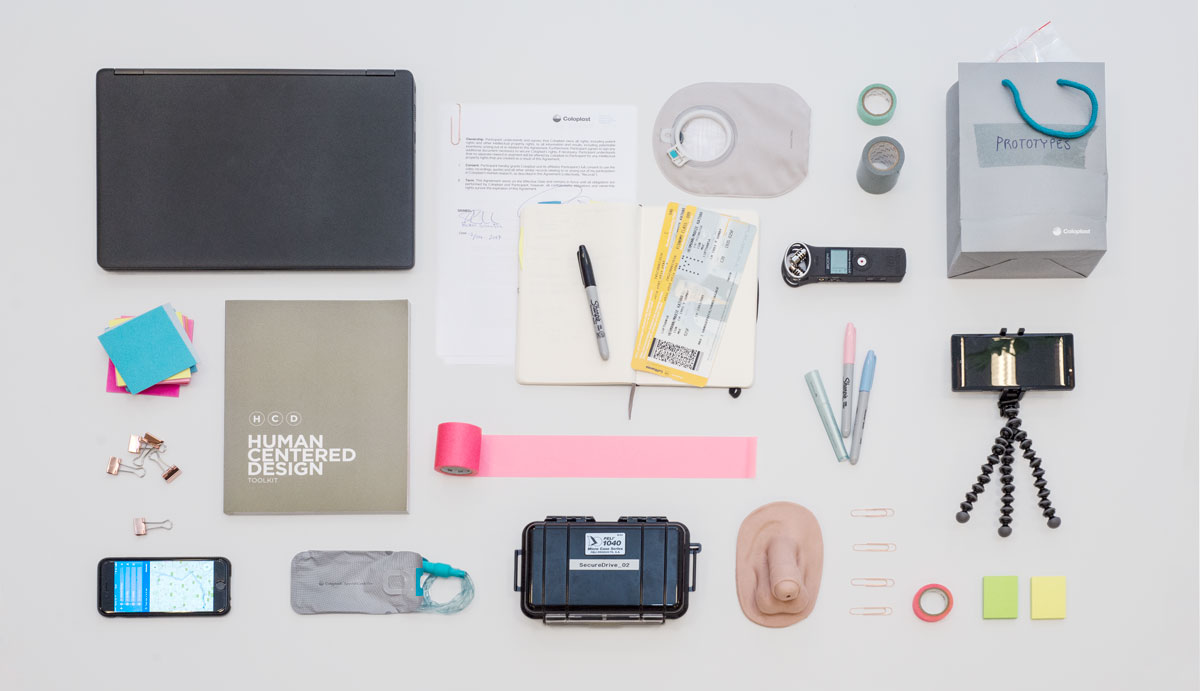

Our research process from setting it up all the way to leveraging what we learned.
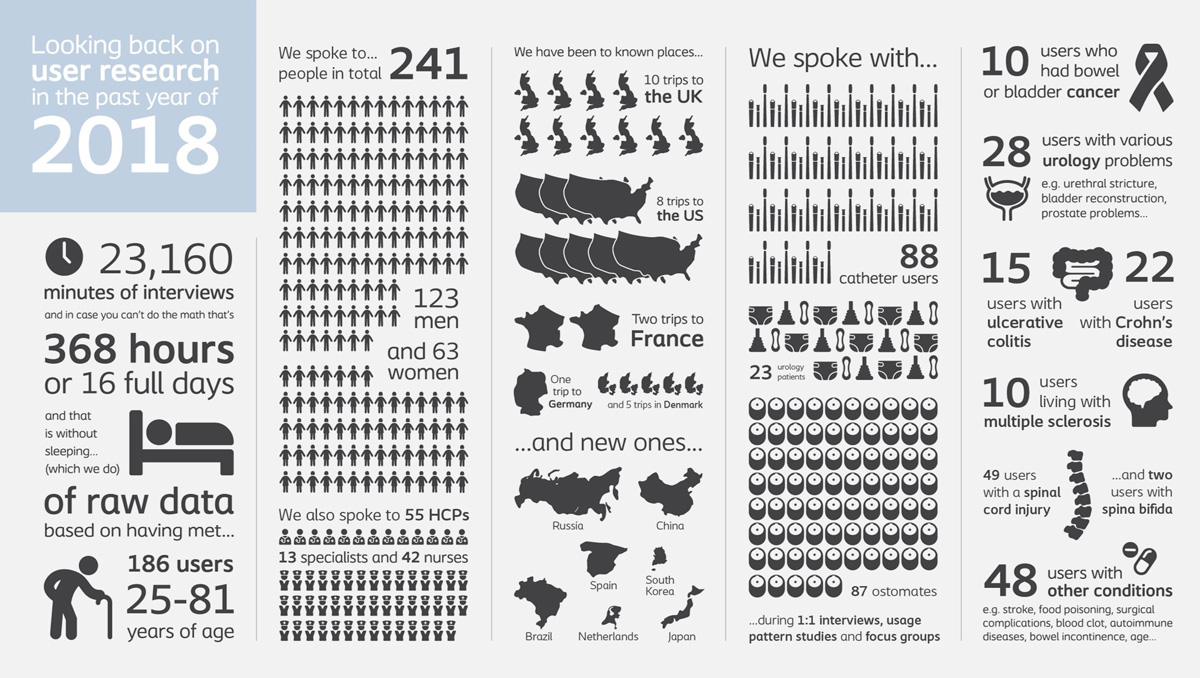
We've been busy in 2018. This is our collective team efforts in User Research.
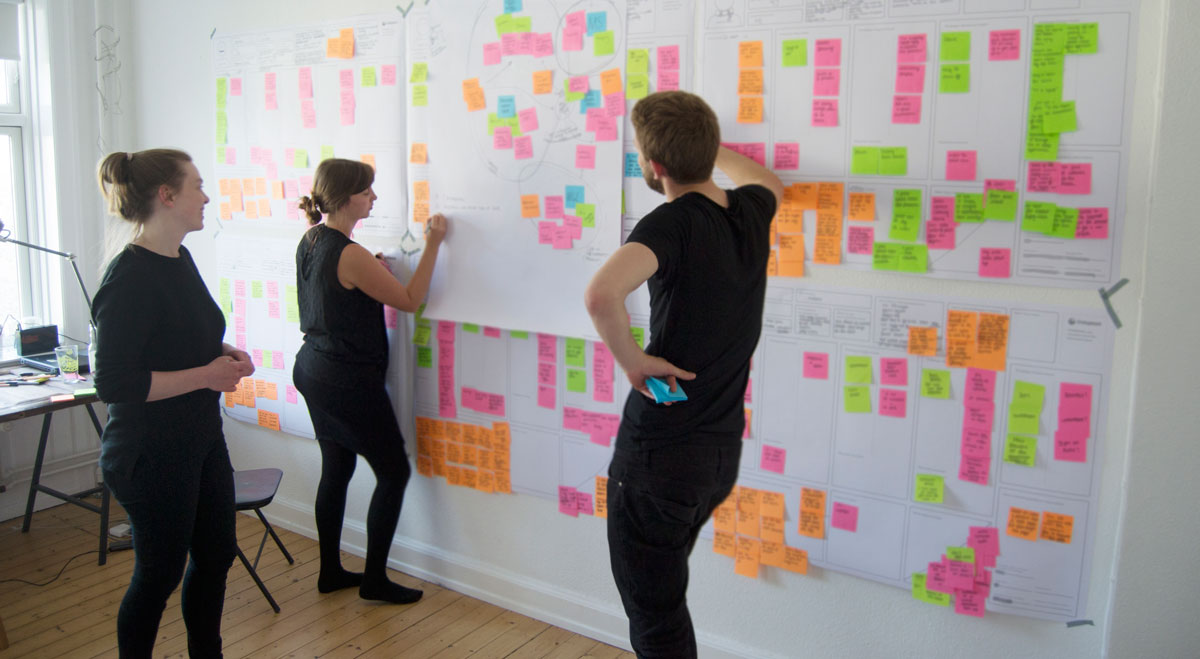
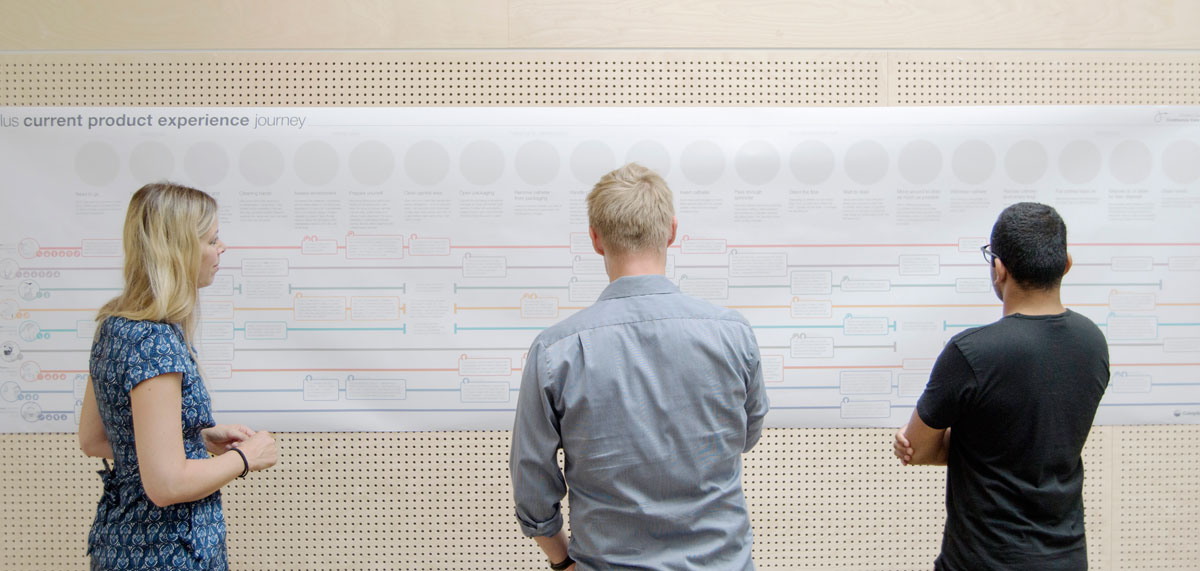
One of the many journey maps; this one on a zoomed-in product level (blurred text and illustrations removed - sorry!)

